Our first stop of the morning was the “Senhime Monogatari Hotel.” As the name suggests, it’s named after Princess Senhime, who is historically associated with Himeji Castle. The hotel is known for blending the charm of historical Japan with the comforts of modern hospitality. However, when we asked the hotel staff, they mentioned that there’s no particular connection between Senhime and Nikko.
On the way to the hotel, we made a quick stop at the statue of Tenkai, which we had missed photographing during our last visit. Bathed in clear morning sunlight and set against a vivid blue sky, the statue seemed to radiate light. It reminded us of Tenkai’s indispensable role in the establishment of Toshogu Shrine, filling us with renewed gratitude.
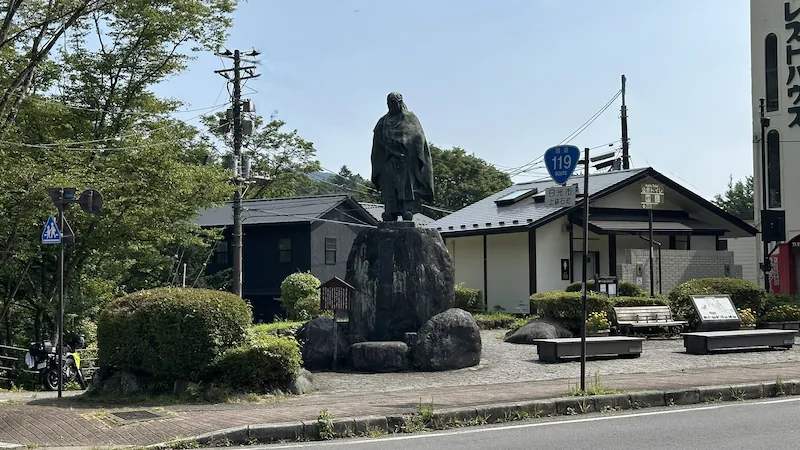
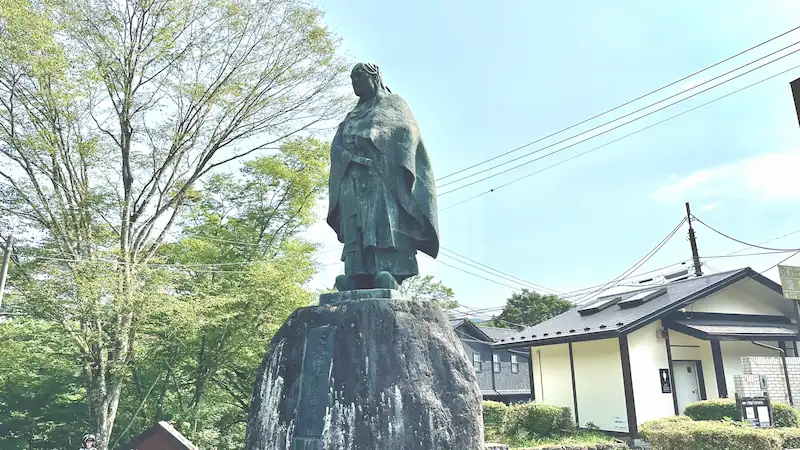
Just across the street, we stopped by the sacred Shinkyo Bridge at Nikko Futarasan Shrine. I finally managed to receive the shrine’s official goshuin (temple seal), which I had missed on previous visits. After paying the entrance fee, I passed through the torii gate and crossed the iconic vermilion bridge to offer my prayers. Holding the goshuin in my hand, I felt a quiet joy—another meaningful entry added to my travel journal.
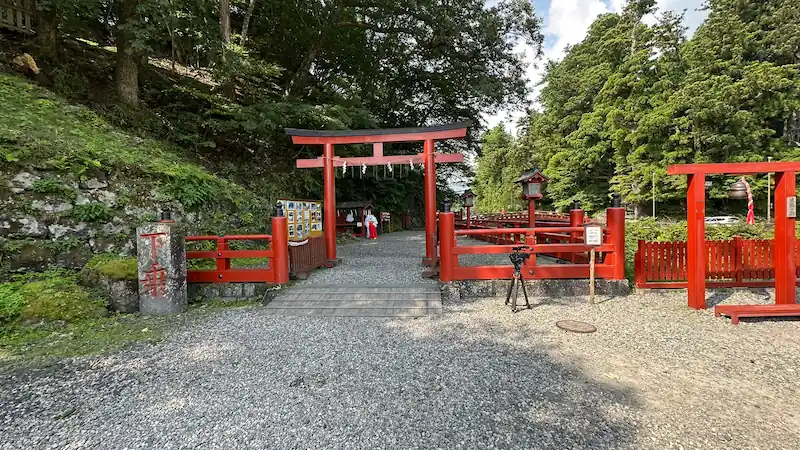
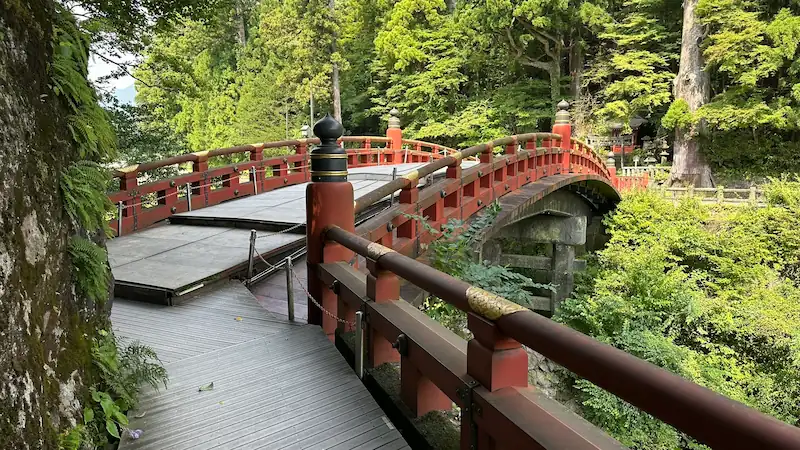
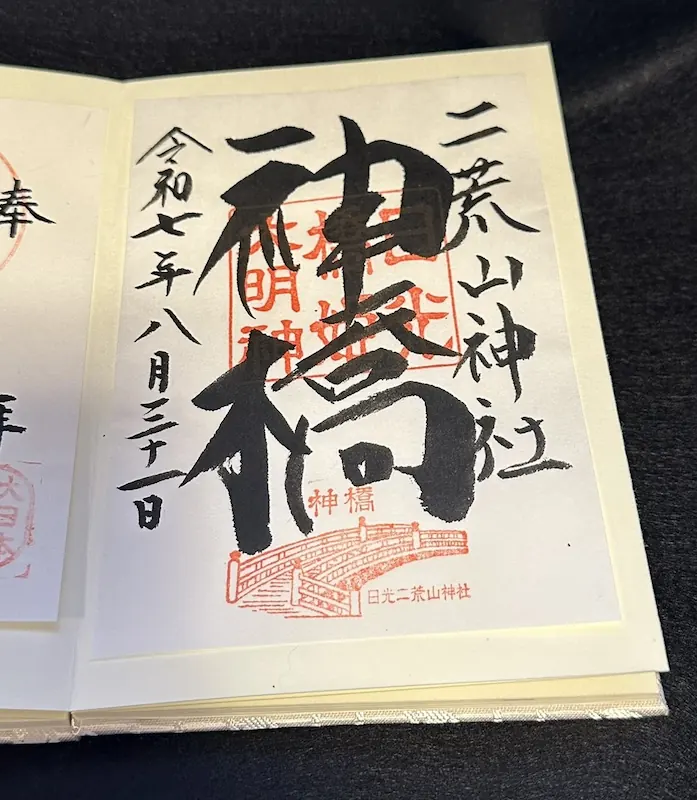
At last, we arrived at the “Senhime Monogatari Hotel.” After completing the check-in process, we headed toward the shrine office. To my surprise, the shrine office was a strikingly modern building with glass walls and a sleek design—quite different from the traditional, nostalgic image one might expect of such a place. Though unexpected, I realized this too is a reflection of how shrines have evolved with the times.
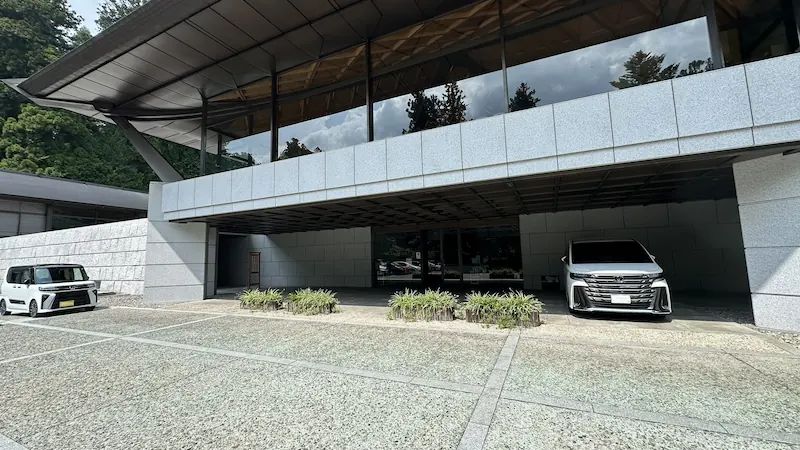
When the scheduled time arrived, a guide from the shrine gave us instructions about the tour, marking the beginning of a truly special experience. We first passed by the “Tōshō-gū Museum of Art” and entered a hidden back path normally closed to the public. Sunlight filtered through the trees onto the stone-paved path, creating a serene atmosphere that felt like stepping into a scene from a historical drama. Before long, we passed through an old, dignified gate and arrived at the majestic “Tōshō-gū Shrine.”
The first explanation centered on the stone torii gate. Standing 9 meters tall with pillars measuring 3.6 meters in circumference, it is the largest stone torii in Japan.
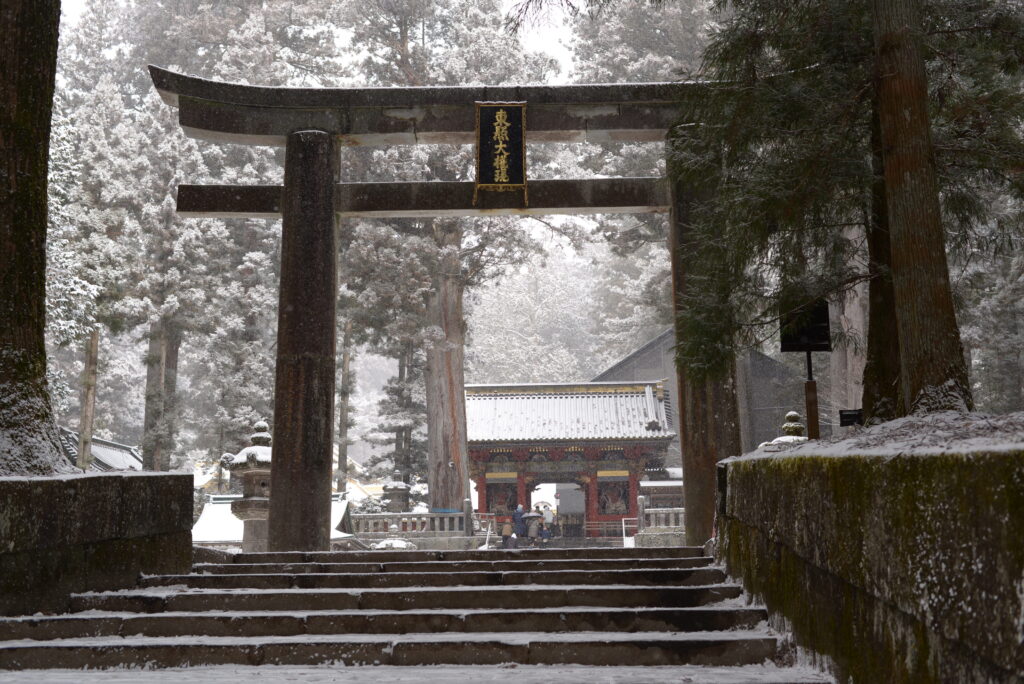
The shrine was established in 1618, and the following year this torii was donated by Kuroda Nagamasa, the son of the famed strategist Kuroda Kanbei. At the center of the gate, the words “Tōshō Daigongen” (the deified name of Tokugawa Ieyasu) were inscribed by Emperor Go-Mizunoo, the 108th emperor of Japan.
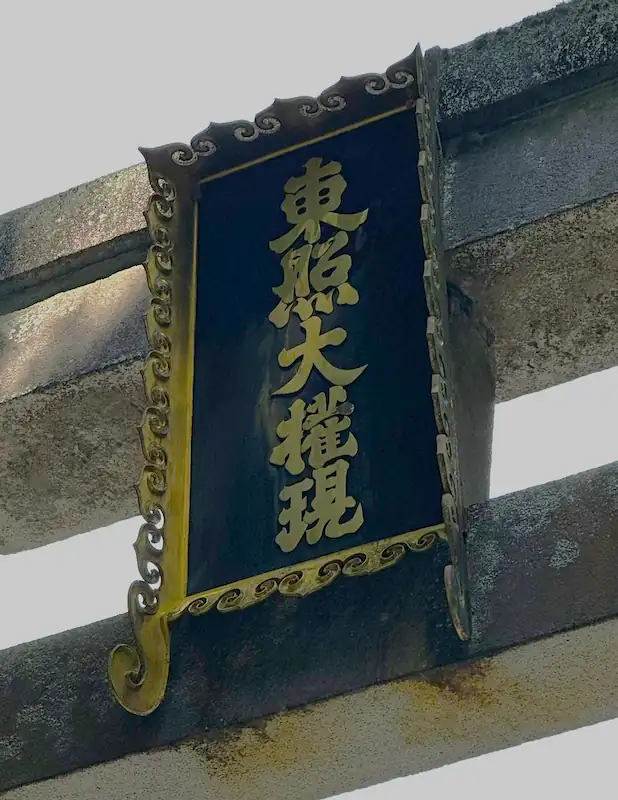
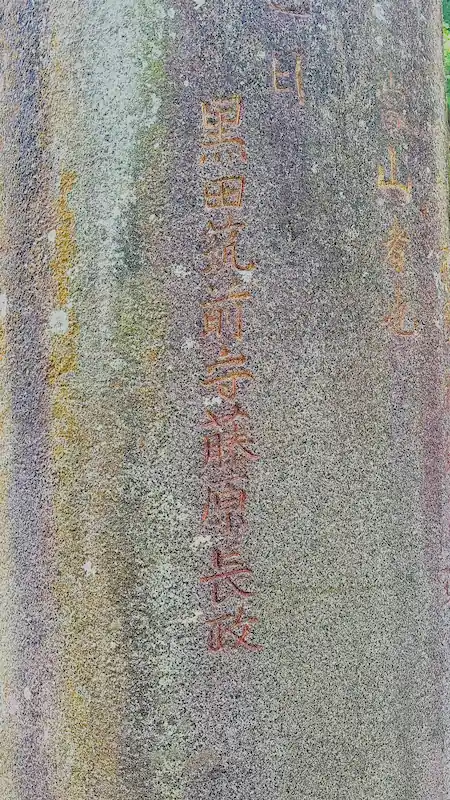
The first stop on our guided tour was the magnificent “Five-Story Pagoda.” Painted in a brilliant vermilion that stood out vividly against the blue sky, the tower exuded both elegance and sacredness. Inside, visitors could see historical artifacts and symbols of faith, enveloped in a solemn atmosphere. As of August 2025, the interior was open to the public for a special exhibition, allowing visitors to view the golden central pillar. Suspended from the fourth floor rather than anchored into the ground, this ingenious design enables the structure to withstand earthquakes. Interestingly, this same principle inspired the seismic isolation system of the Tokyo Skytree. Rather than being buried, the central pillar essentially “floats,” absorbing shocks.
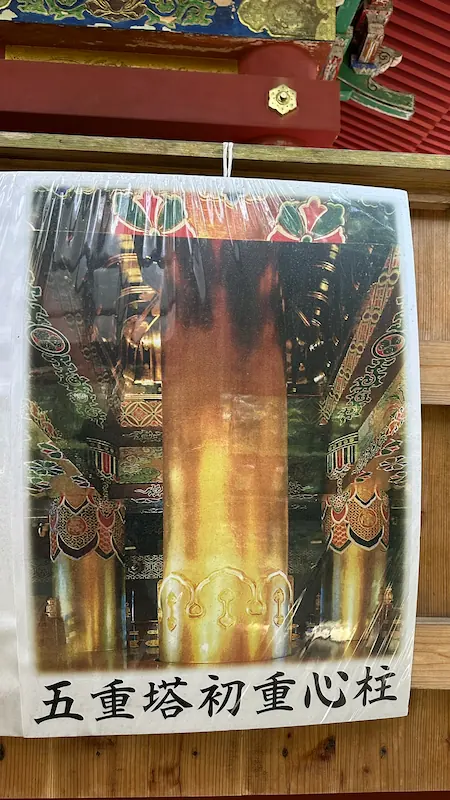
Next, we entered the heart of the Tōshō-gū shrine grounds. In total, there are 55 shrine buildings, eight of which are designated National Treasures. As we stepped into the main compound, three sacred storehouses stood prominently before us. Our guide explained their remarkable humidity-control system: when moisture levels rise, the wooden beams expand to seal gaps; when the air is dry, the wood contracts to create ventilation. This ingenious natural system preserves sacred treasures for centuries. The pillars and beams were adorned with elaborate carvings of animals—some based on actual creatures, others inspired by mythical beings such as qilin—etched with the imagination and skill of Edo-period craftsmen. The artistry and devotion embedded in every detail left me breathless.
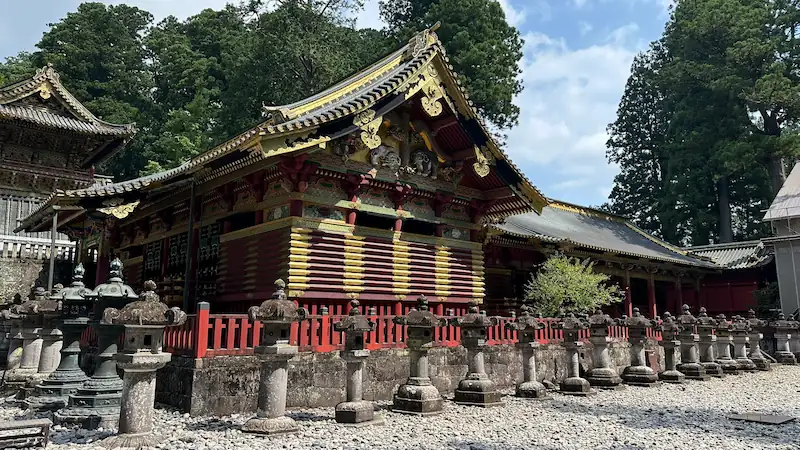
We were then guided to the “Shinkyūsha” (Sacred Stable). Famous for its carvings of the “Three Wise Monkeys,” this building is dedicated to the belief that monkeys serve as divine protectors of horses. For shoguns and samurai, horses were indispensable companions in both war and ceremony. The carvings symbolize the idea that monkeys, with their spiritual power, ward off misfortune and safeguard these vital animals. Hearing the guide’s explanation, I was fascinated by how this imagery reflected the fusion of Shinto and Buddhist beliefs.
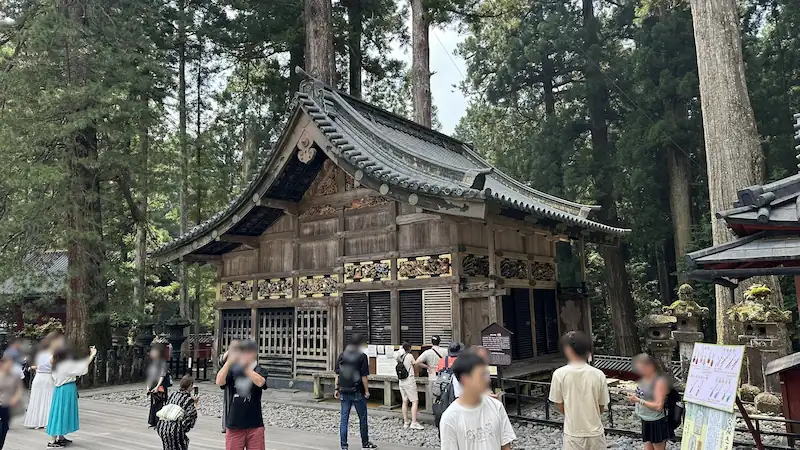
Finally, we arrived at the breathtaking “Yōmeimon Gate.” Adorned with white plaster and gold leaf, this gate is so lavish and resplendent that it is nicknamed “Higurashi-no-mon” or “the Gate of Sunsets,” meaning it is so captivating that one could gaze at it until sundown without ever tiring of its beauty. The moment I stood before it, I was overwhelmed by the brilliance of the gilded details and the intricate carvings, each radiating unmatched craftsmanship.
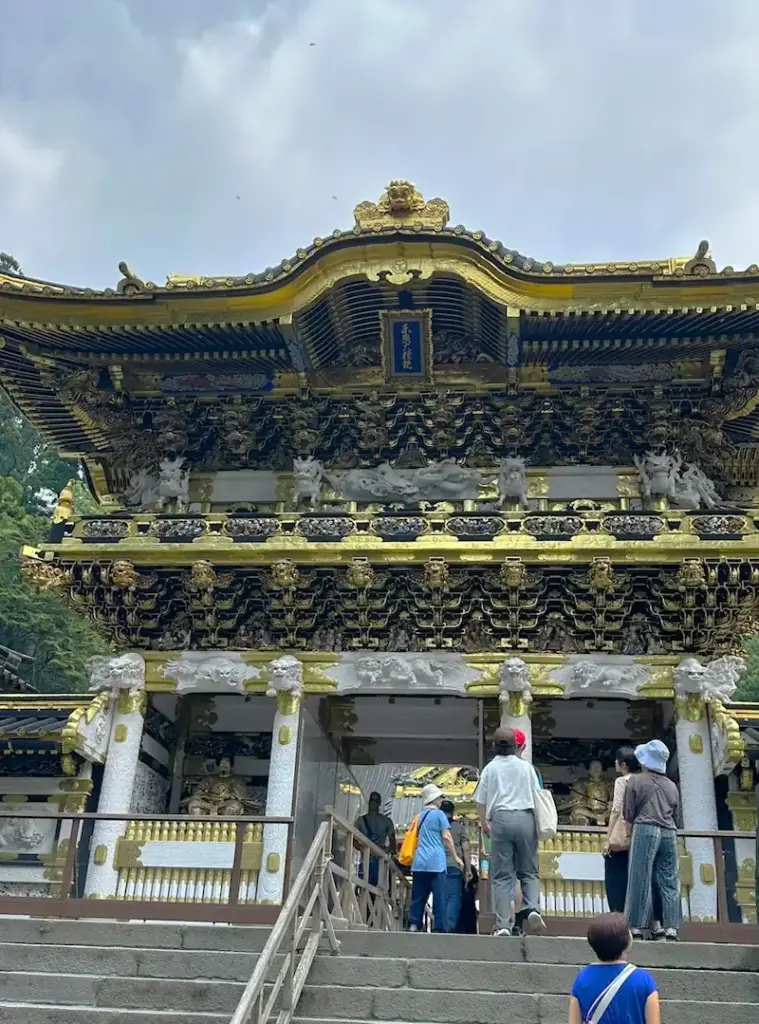
Just before the Yōmeimon Gate, we were introduced to a rare treasure: an iron lantern said to have been dedicated by Date Masamune. Unlike the more common stone lanterns, this unique piece is even believed to have been crafted overseas, symbolizing the international connections that expanded during the Warring States period. It was a story that perfectly reflected the grand vision of Masamune, a warlord known for his ambition to stand alongside the great unifiers of Japan.
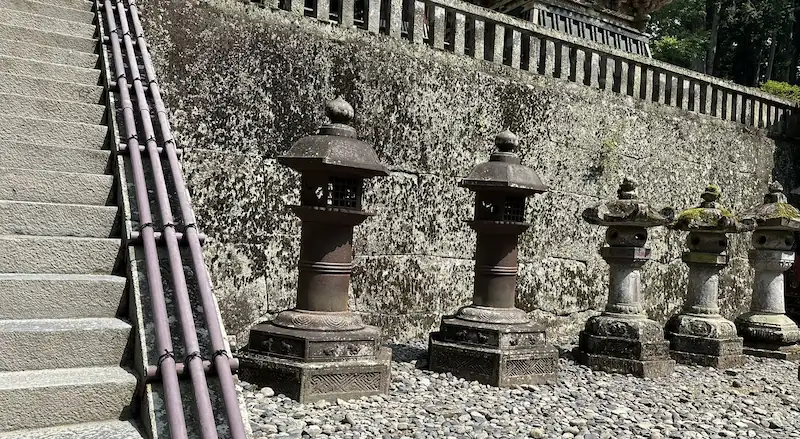
Passing through Yōmeimon, we were greeted by the famous “Sleeping Cat.” Though small in size, this carving radiates a gentle charm. Behind it, tiny sparrows are depicted in flight. Our guide explained that the carving symbolizes peace: “In an age of tranquility, even cats can sleep soundly while sparrows fly freely without fear.” The thought filled me with a warm sense of serenity.
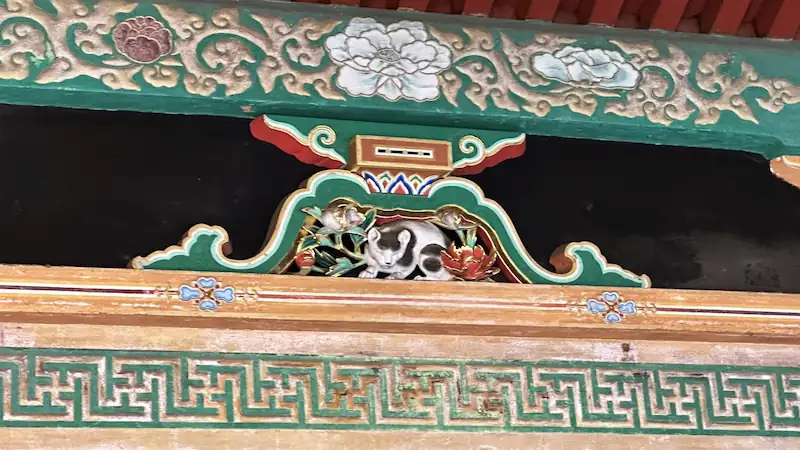
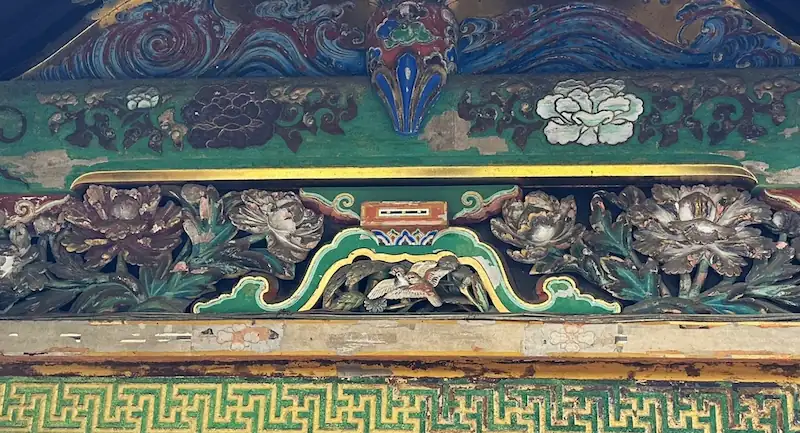
Continuing along the back route, we finally reached the “Shōgun Audience Room.” In this specially arranged space, we received a sacred prayer performed by a Shinto priest. The room, a small chamber adjacent to the main hall, was adorned with painted ceilings and walls designed to welcome shoguns in grand fashion. Even today, the fading artwork reveals the splendor of its past. We were told that successive shoguns once sat here during their official visits to Nikkō. (Unfortunately, photography was not permitted.)
After the prayer, an extraordinary experience awaited us—walking through a corridor normally closed to the public. In contrast to the dazzling opulence of Yōmeimon, this wooden passage was simple, quiet, and unadorned. The juxtaposition of extravagance and humility seemed to embody the profound spiritual depth of the Tōshō-gū sanctuary.
Our journey concluded back at the shrine office, where we participated in a ritual of sharing sacred offerings—food and sake presented to the deities. The sense of unity between gods and people was deeply moving, marking one of the most memorable highlights of the tour. Finally, we were presented with commemorative gifts, including a sacred talisman, a red sake cup, an Aoi crest glass, and a pair of blessed chopsticks. With both heart and spirit enriched, the tour came to a fulfilling close.
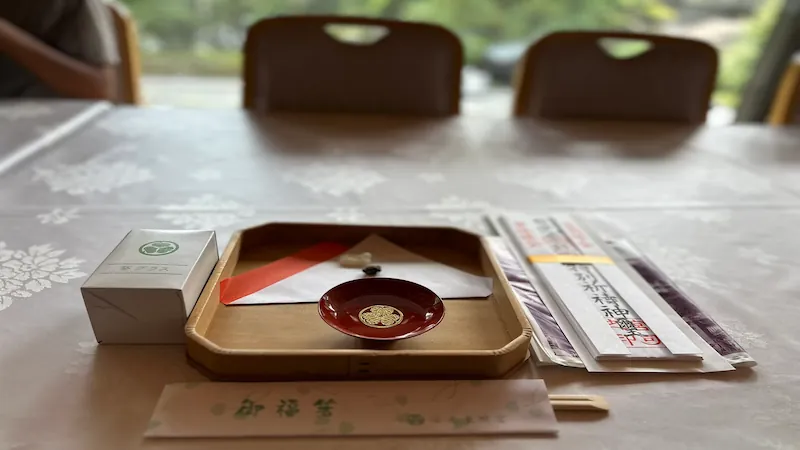
Beneath the clear blue sky, I walked along paths normally closed to the public, immersing myself in the living spirit of history and faith. The dazzling Yōmeimon Gate, the charming Sleeping Cat, and the quiet wooden corridor—all shone all the more brightly in their contrasts, giving me a profound sense of Japan’s authentic historical depth.
If you want to experience Nikkō Tōshō-gū in a way unlike the ordinary visit, I highly recommend joining this special tour.
Tour Overview
Start Time
Departs at 10:00 AM (Duration: approx. 1 hour 45 minutes)
Operating Period
Year-round (excluding major shrine festivals such as the Spring and Autumn Grand Festivals, New Year’s holidays, and other restricted dates)
Fee
3,700 yen per person (tax included, elementary school students and above)
Included in Fee
Tōshō-gū admission ticket, guide fee, prayer fee, and commemorative gifts
※ Re-entry after the tour requires the purchase of a new admission ticket.
For details, please refer to the official tour page (Japanese only):
http://www.nikko-odekake.com/detail.shtml?111
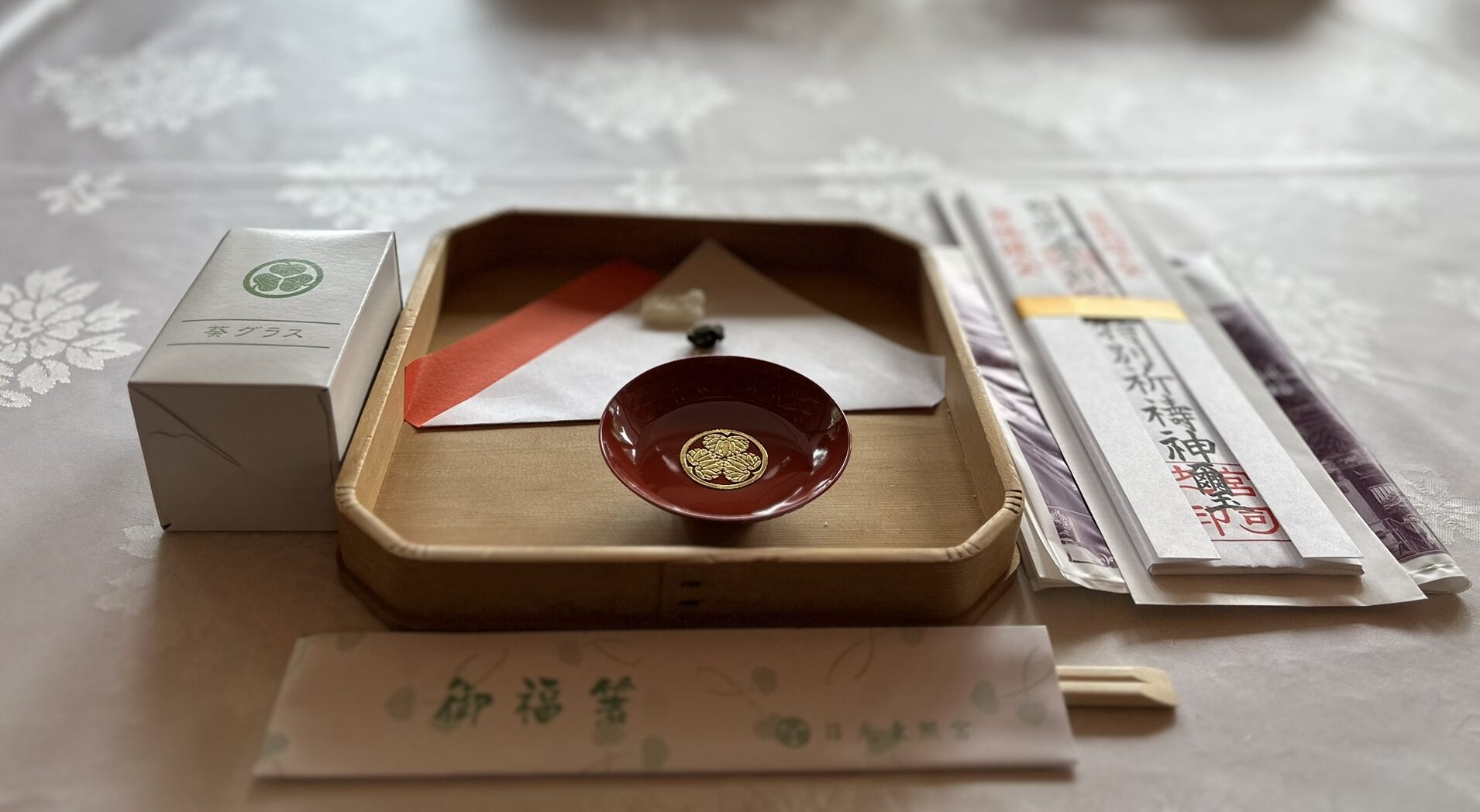


comment